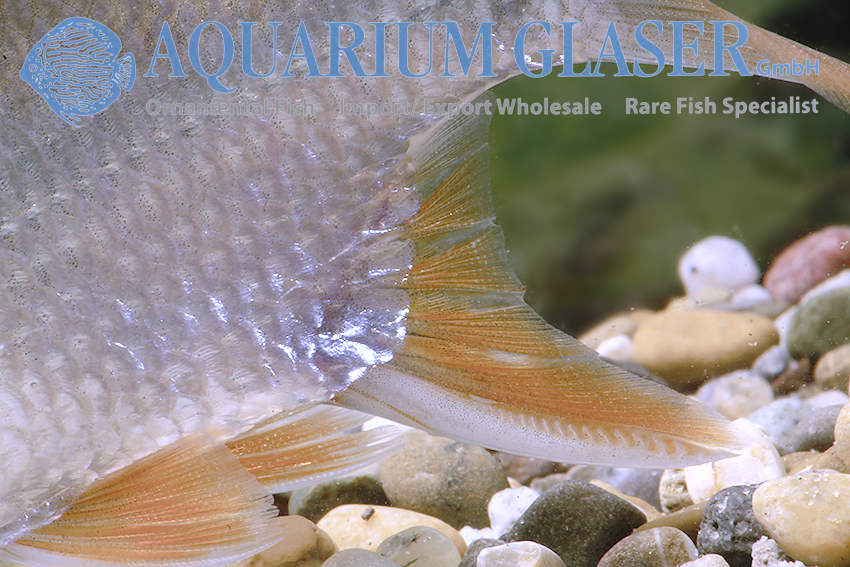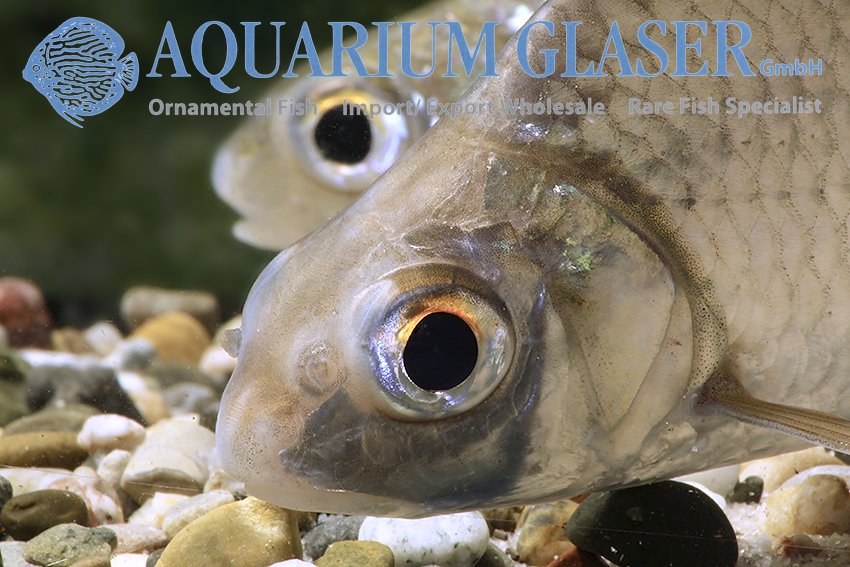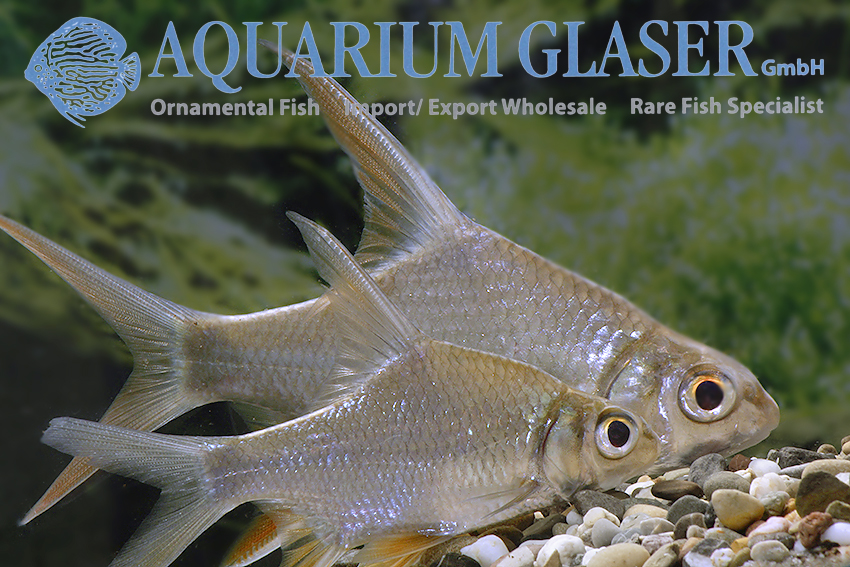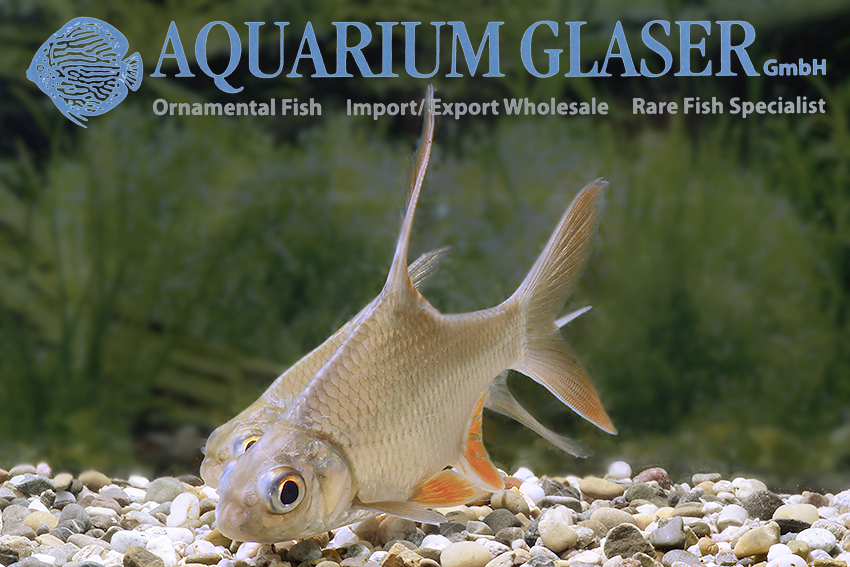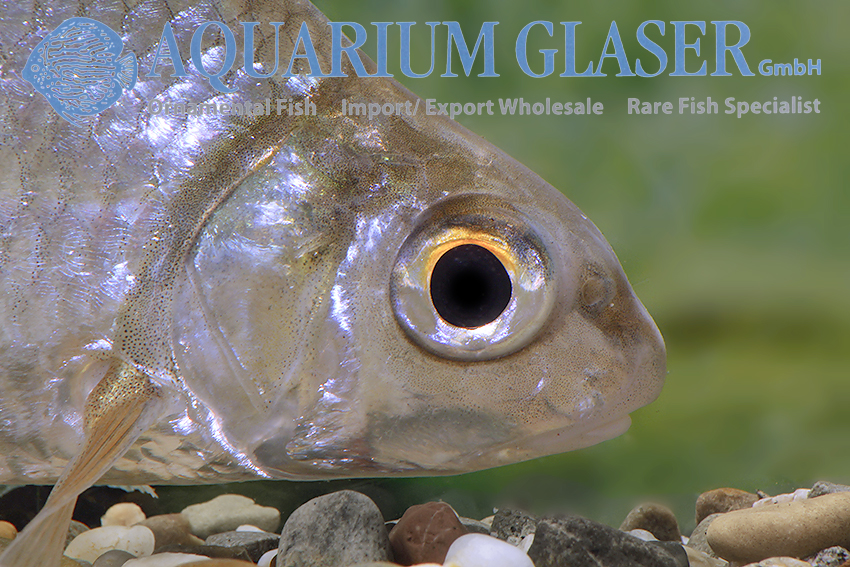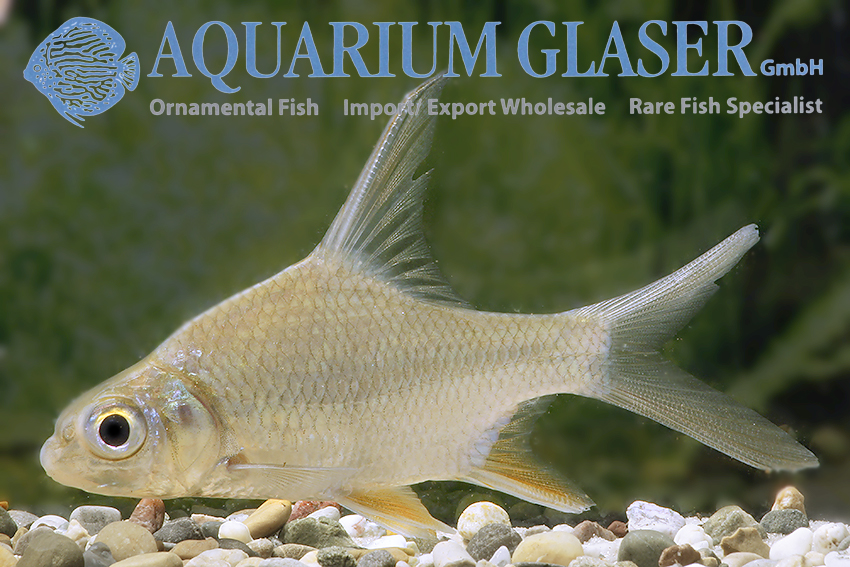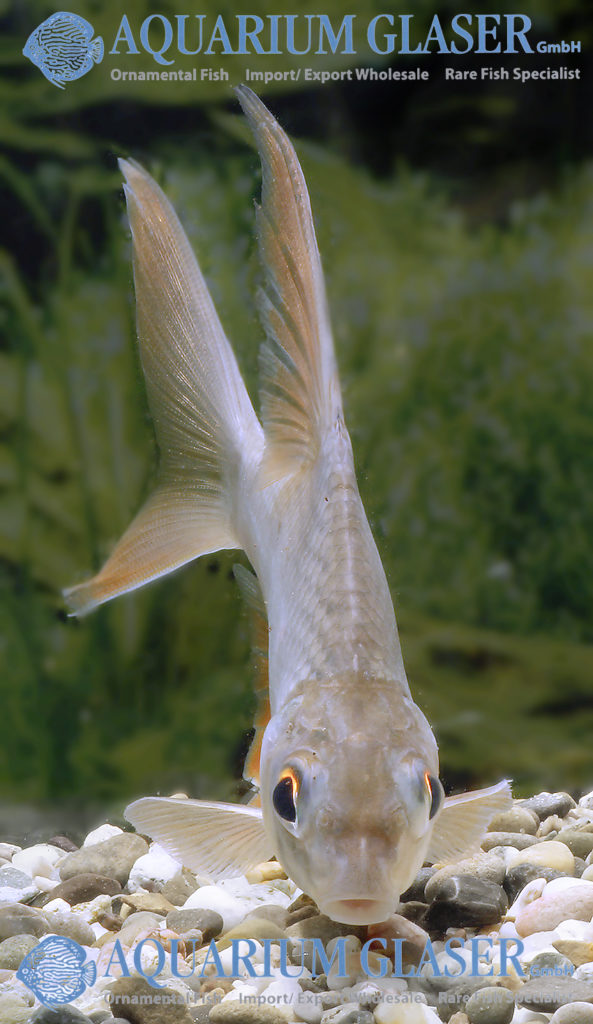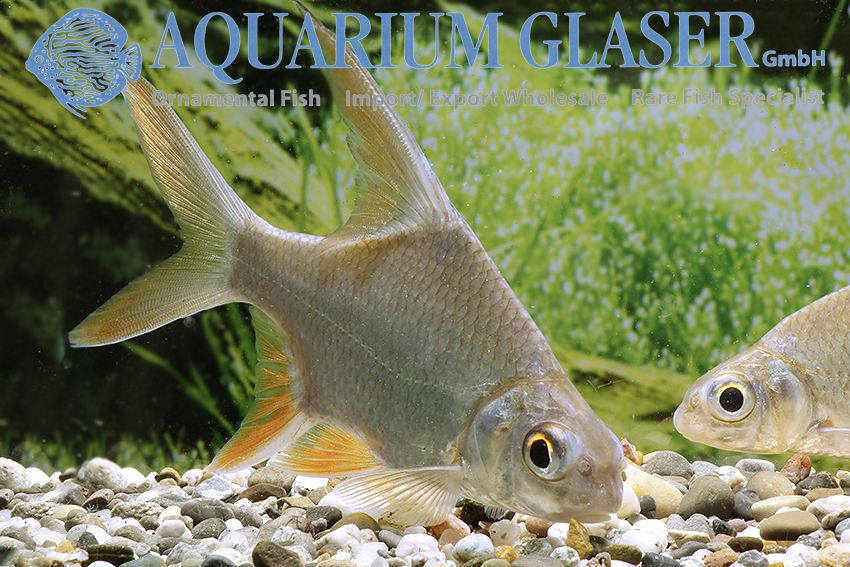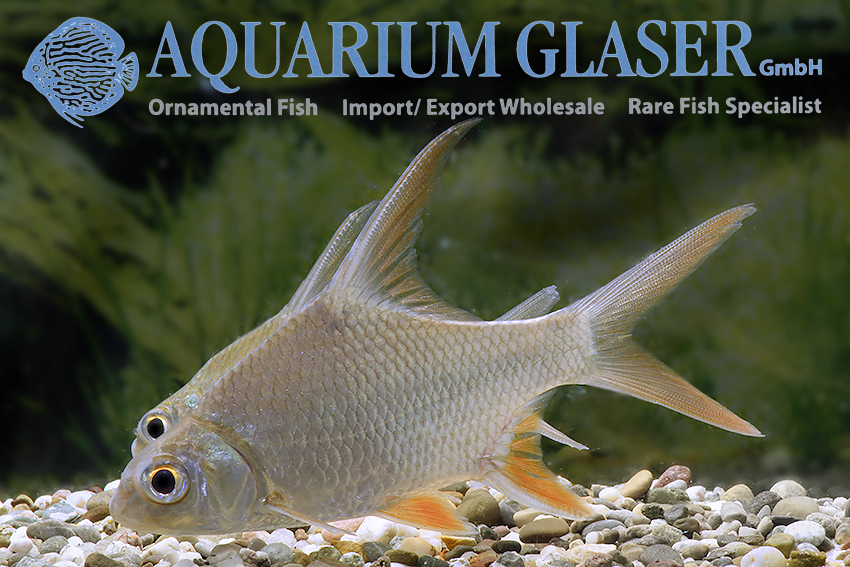These large barbs differ from all other barb relatives by an easily recognisable external feature, namely a strong ossified anal fin spine, which can be smooth or serrated. Within the Cyprinidae in a broader sense only carp and crucian carp show this anatomical feature, but these two genera are not barbs.
So while the genus Puntioplites can be easily recognized, the species is quite different. Usually four species are recognized, two with serrated anal fin spines (P. falcifer and P. proctozysron) and two with smooth ones (P. bulu and P. waandersi). P. falcifer is probably the most attractive species, it has long, orange fins, those of P. proctozysron are said to be dark. P. bulu has a vertical banding and P. waandersi does not. All species grow 30-50 cm long and have a high amount of vegetable food on the menu. Not much can be said about the care of the currently 12-15 cm long animals, but they are attractive fish that are also interesting for public aquariums. In behaviour they are rather to be classified as calm, they completely lack the headless panic-mongering that many other larger barbs show during the acclimatisation phase. P. falcifer occurs in the large southeast-asian streams Mekong, Xe Bangfai and Nam Theun.
For our customers: the animals have code 447554 on our stocklist. Please note that we only supply the wholesale trade.
Text & photos: Frank Schäfer





